Eofauna only came onto the scene in 2017, and after five years, their wares can still be counted on just two hands. But darned if they haven’t shown themselves to be the very best company of all when it comes to prehistoric proboscideans. They started out with the steppe mammoth, then the straight-tusked elephant Palaeoloxodon, then Deinotherium, and for 2022, they’ve bestowed on us the amebelodont known as Konobelodon in addition to their terrific Diplodocus.
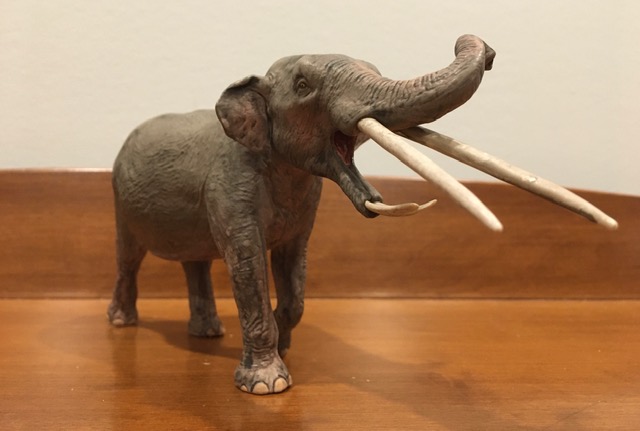
Thanks to their elongated mandibles tipped in enormous flattened incisors, amebelodonts were arguably the weirdest-looking proboscideans ever to have walked the face of the Earth. And they walked said face rather successfully, as their remains have been found in North America, Europe, Africa, and Asia. The most famous members of this family are Amebelodon itself and Platybelodon (and why the blue blazes have none of the major prehistoric toy companies tackled that genus already?), but have you ever heard of Konobelodon before? I honestly hadn’t until Eofauna revealed their version back in the fall of 2021. Originally discovered in 1836 on the Attica peninsula in Greece, Konobelodon was at first thought to be a species of mastodon before being reclassified as a European species of Ambelodon. It was not until 2014 that it was elevated to the status of a separate genus. Three species are now known to have existed: K. atticus from Europe, K. britti from North America, and K. robustus from China. This figure represents the former.
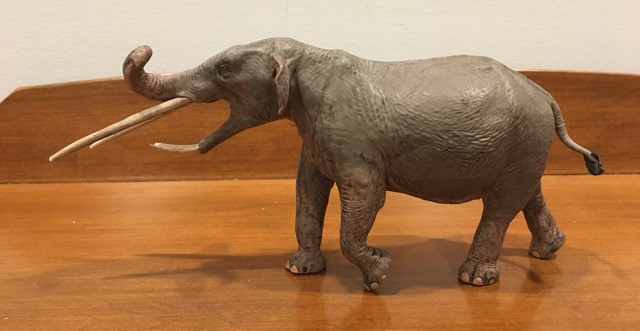
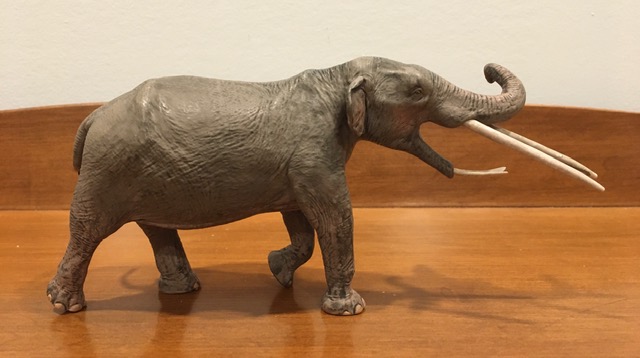
Eofauna’s Konobelodon is sculpted in an active pose with the right front foot and left hind foot placed forward while the left front foot and right hind foot are in mid-step. The tail is swinging to the left, the head is turned slightly to the right, the ears are spread wide, the trunk is raised high and waving to the left, and the mouth is wide open. This individual, which is visibly male, is clearly in a state of excitement. Perhaps it’s seeing off a would-be predator or charging at a rival male or chasing after a female in estrus. Place it with the other three Eofauna proboscideans and you’ve got a thundering stampede.
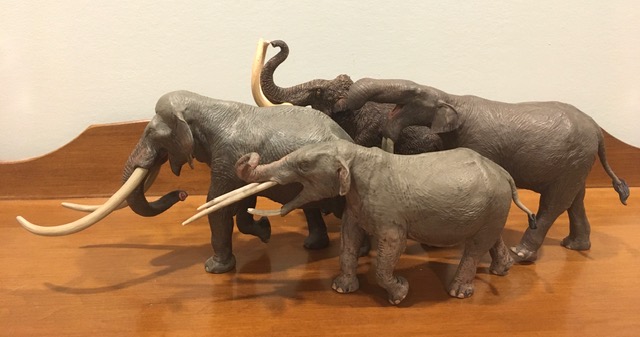
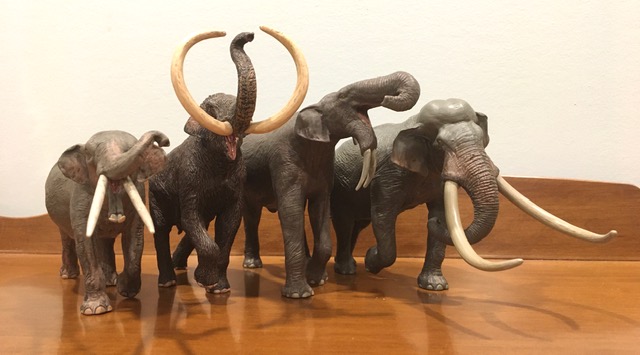
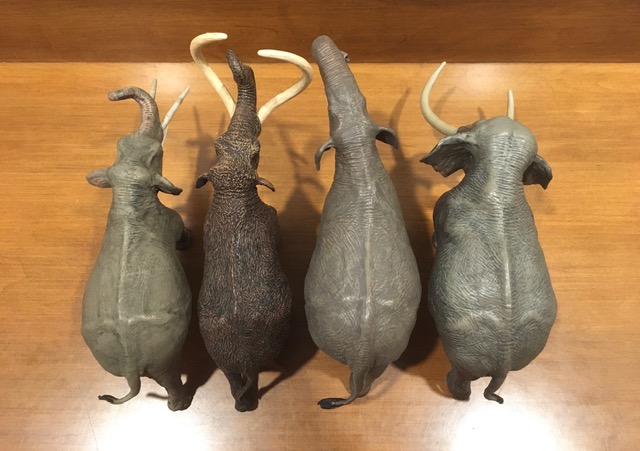
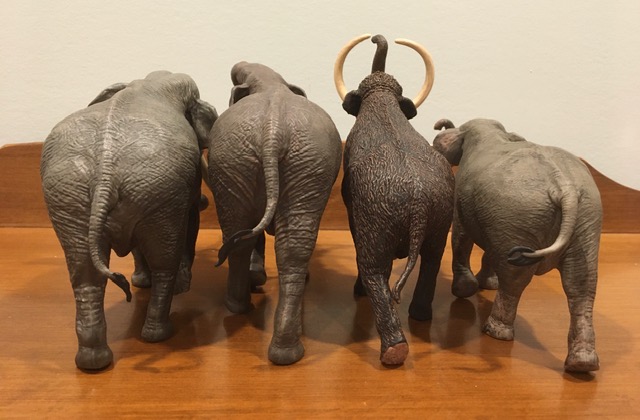

The Konobelodon measures about 21.5 cm long from the tips of its upper tusks to its tail tuft, stands 10 cm tall at the top of the cranium, and is around 6 cm wide. It is the smallest of the four, but still big enough to command a presence amidst other prehistoric mammal figures. K. atticus is thought to have measured up to around eight metres long and four metres tall with a weight of ten tons, around the same size as a very large male African savannah elephant.
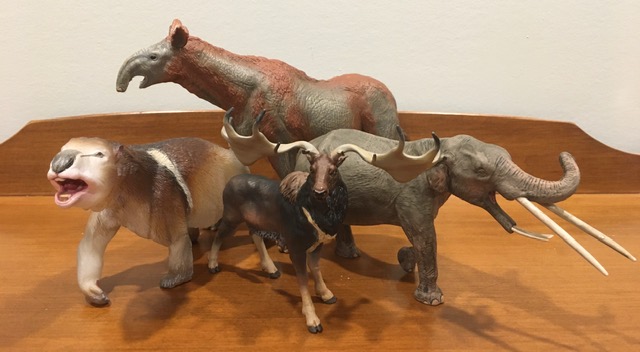
The main colour on this figure is stone grey with dull pink visible on the limbs, underbelly, head, ears, and trunk. Dark grey wash is used to bring out the sculpted detail. The nails are pinkish beige and the tusks are ivory white with grey wash to give them a worn, dirty appearance. Finally, the tiny eyes are yellow, the mouth is glossy pink with off white teeth, and the tail tuft is black. It’s exactly the sort of colour scheme you’d expect to see on any modern proboscidean or most prehistoric ones, and it’s been applied very well indeed.

Similarly, pains have been taken to give this figure as realistic an appearance as possible for its size and price point. The skin is wrinkled and baggy just like a modern elephant’s, but not overly so. The trunk has the familiar folds running down its length, the eyes are wide and alert in spite of their small size, and the ears almost look like they could flap. The open mouth features visible upper molars and the upper tusks are asymmetrical, with the left one being longer and at a slightly higher angle. The limbs look sturdy and muscular and the body is vaguely pear-shaped, with the rear portion being much thicker and rounder than the front.
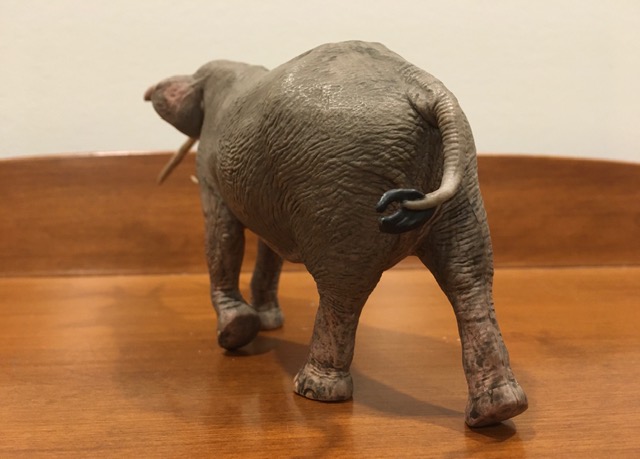
Konobelodon can be distinguished from Amebelodon and Platybelodon by way of its narrower mandible, lower tusks that are thin and curving upward, and upper tusks that are far longer and straighter. All these features have been captured perfectly on this figure. The ears are small much like those on Asian elephants. And whereas outdated depictions of amebelodonts featured very short, very broad trunks that frankly wouldn’t have come in terribly handy for foraging and drinking and communicating, the trunk on this one is more like a modern pachyderm’s.
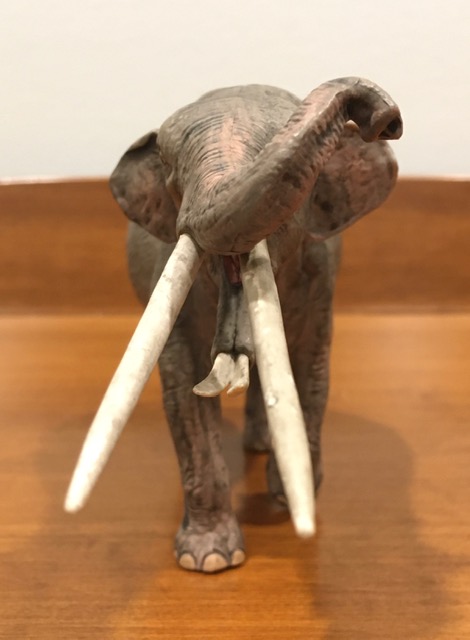

Like all Eofauna figures, this one comes with a information card showing various statistics and a portrait of the animal in its natural environment. If you don’t own the other proboscideans, then know that the Konobelodon is the weakest of the four in terms of speed, attack, defence, and strength, but is at least more intelligent than the Deinotherium!
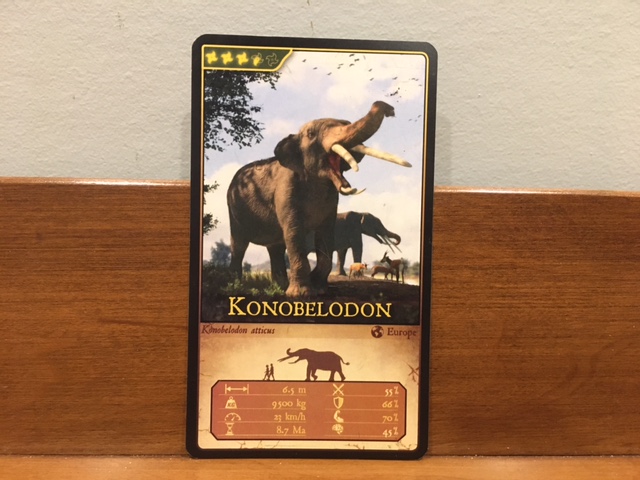
I can’t find any faults with the Eofauna Konobelodon. It’s a good size, it’s definitely a unique species, it’s well-painted and magnificently sculpted, and as you saw above, it looks great alongside its fellow tuskers. You can find it for sale at Everything Dinosaur and other such online stores. Eofauna has announced that their next figure will be none other than Tyrannosaurus imperator, and that pleases me greatly, but I’m also very keen for them to tackle yet another proboscidean. My own top choice would have to be either the gargantuan Mammut/Zygolophodon borsoni with its incomparably long tusks, or Stegotetrabelodon, the first known true elephant. Here’s hoping!
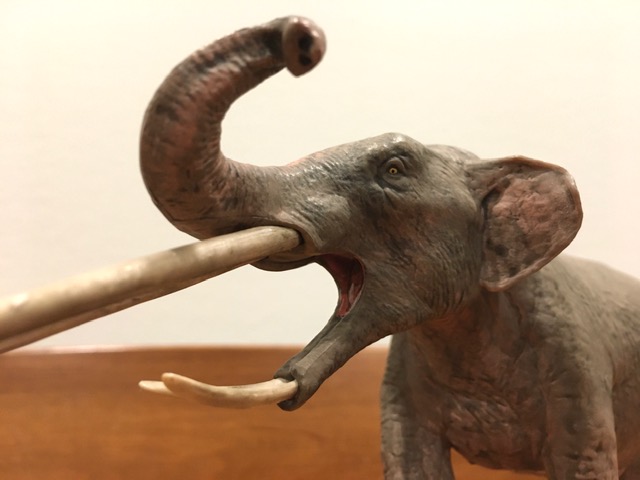
Support the Dinosaur Toy Blog by making dino-purchases through these links to Ebay and Amazon. Disclaimer: links to Ebay.com and Amazon.com on the The Dinosaur Toy Blog are often affiliate links, when you make purchases through these links we may make a commission

If I had to make a choice of Eofauna releasing two dinosaurs or two mammals each year, I don’t know what I’d do. Their Elephants are just so good.
Another superlative review by the author. I do miss the ‘good old days’ when you were able to produce many more of them, but I’m glad that you’re still able to find the time to do the ones that you do.
Another reason I don’t post reviews as often as I used to is because I want to conserve for the future. Someday I’ll run out of items to review, but I hope to prolong that day for as long as possible!
Great review, I also have to say that in addition to the Eofauna figures mentioned, the giganotosaurus of the same brand is also a magnificent figure. Honestly, that konobelodon is a must for any collector in love with prehistoric mammals along with the PNSO levyatan among other figures. Honestly, as stated in the article, Eofauna’s extinct elephants are the best on the market.
Thanks!
Thank you for the great review!
After Eofauna released the information I was excited to read articles about this species. I found there are limited studies on it and the ongoing debate of reclassification.
Personally, I really want to know how Eofauna did their research and restoration on this konobelodon. I mean there are some documents we can look at on all replicas Eofauna has done so far, but not this knobelodon.
Anyway, it is a good one and looking forward to more their excellent works!
Well, Larramendi and Molina-Perez are both paleontologists, so they presumably have better access to published research. And unpublished research as well.
Great review of one of the highlights of this year, surely. Thank you!
Wonderful review of this obscure and fascinating elephant.
It really is an amazing model and I hope to see more of them in the future.
Thanks!
All those elephants look amazing!